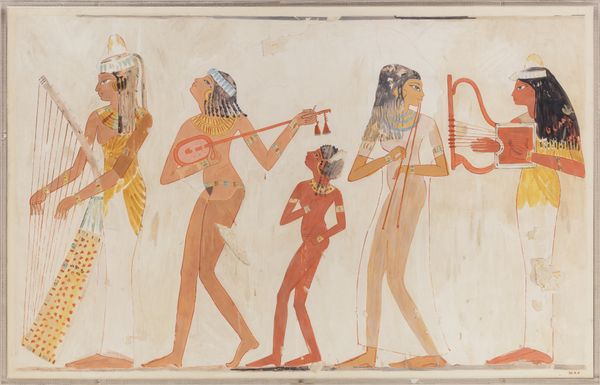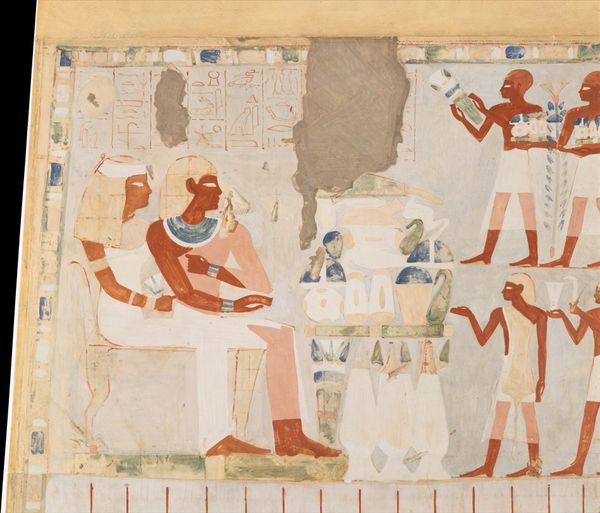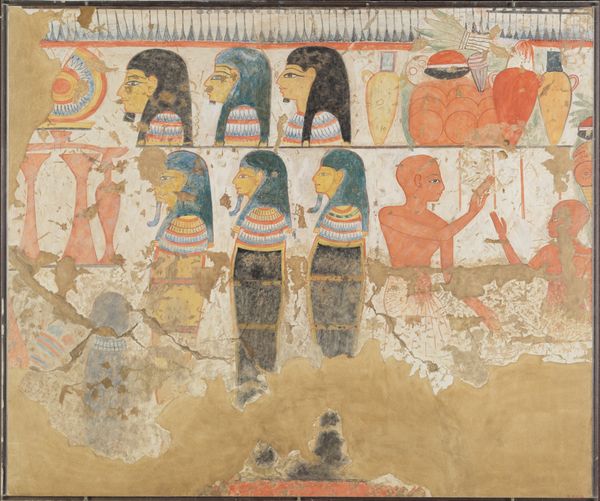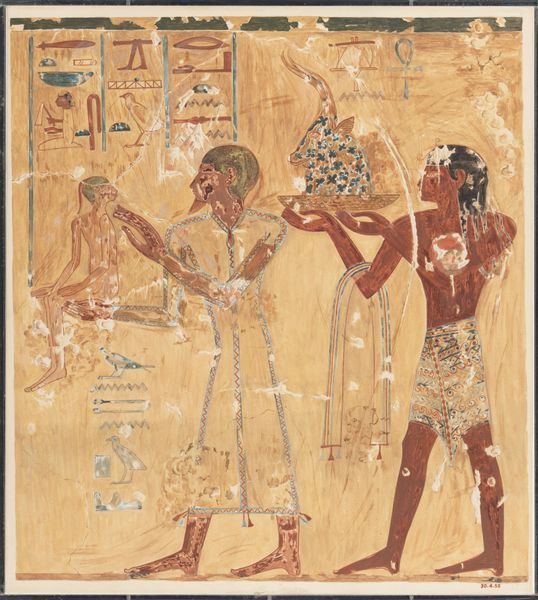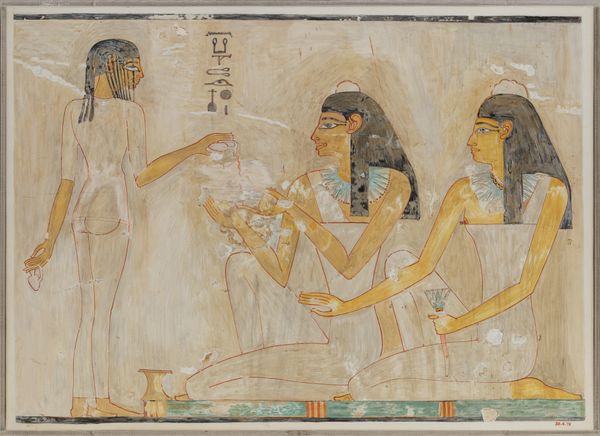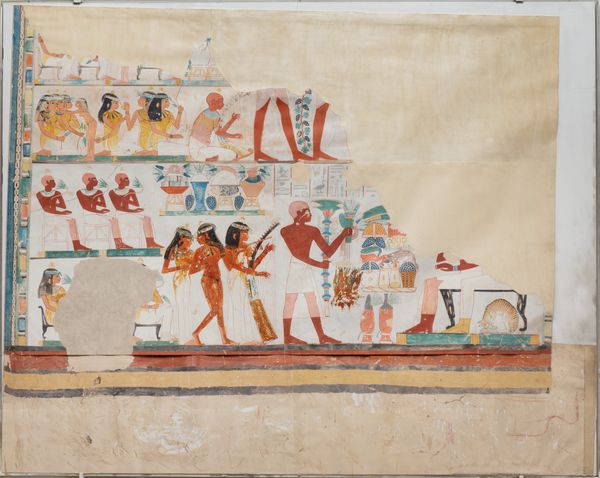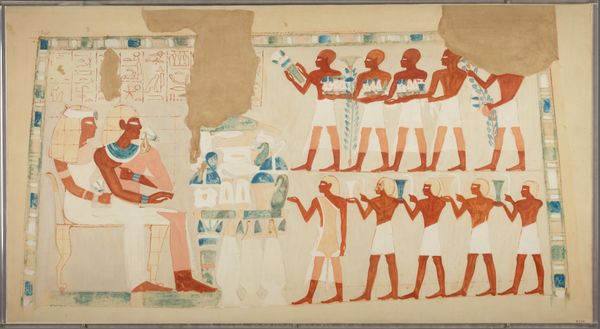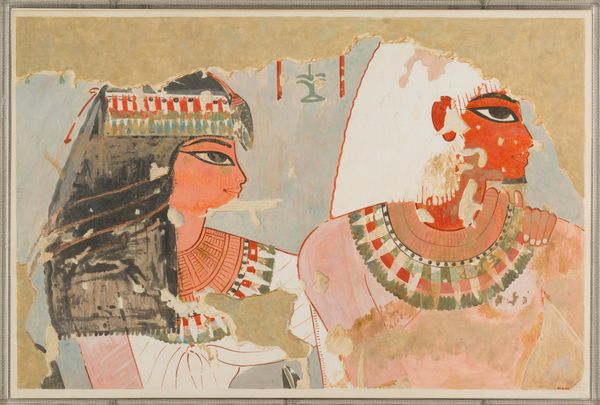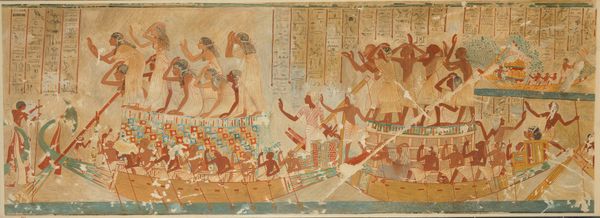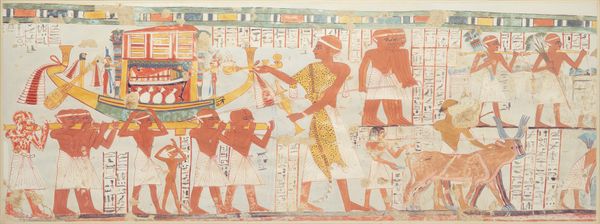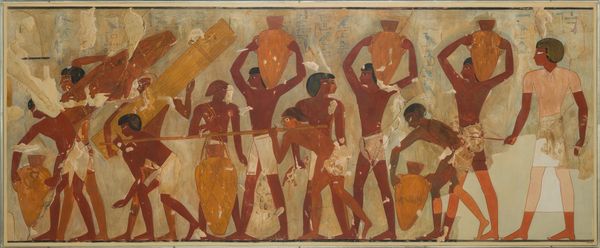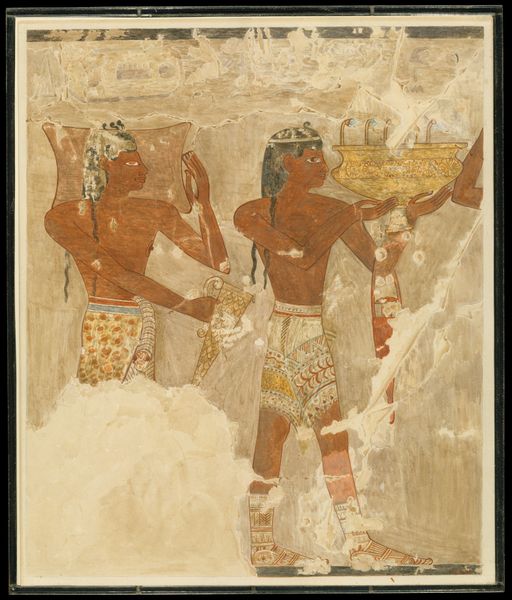
painting, fresco, ink
#
portrait
#
water colours
#
painting
#
ancient-egyptian-art
#
figuration
#
fresco
#
ink
#
egypt
#
history-painting
Dimensions: facsimile: h. 29.5 cm (11 5/8 in); w. 58 cm (22 13/16 in), scale 1:1; framed: h. 33 cm ( 13 in); w. 61 cm (24 in)
Copyright: Public Domain
Editor: This is "Women at a Banquet", an Egyptian fresco from around 1400 BC, found at the Metropolitan Museum of Art. There’s a sense of formality and restraint despite the seemingly social setting, don't you think? How would you interpret this image in its historical context? Curator: Formality is a good word for it. The image clearly depicts a social gathering, but what’s most interesting is how these gatherings were *meant* to be depicted. Visual representations like these from ancient Egypt were so important in preserving a certain order and hierarchy. Consider the meticulous rendering of their garments, hairstyles, and adornments; all were visual cues communicating status and roles in society. How do you see these details contributing to the overall message of the artwork? Editor: I see how each element, carefully depicted, elevates the subjects and underscores the event's importance. It strikes me that it could be some kind of public performance? Curator: Exactly. Remember, images in ancient Egypt weren't just for looking at. They were performative acts, reinforcing the power structures of the time. These banquets were often linked to religious festivals and rituals, underscoring the participants’ alignment with the established socio-political order. Do you see any elements that could be related to their believes, values, social status? Editor: I guess their fine jewelry and elaborate hairstyles. Also, everyone has the same slightly detached expression which conveys a sense of superior elevation above common folk. Curator: That is a key observation. By displaying standardized images of these formal events, the ruling class cemented its position. Thinking about the audience of this image – who was meant to see it, and where would it have been displayed? Editor: I didn't think about that. So, the painting really says less about the "reality" of the banquet and more about projecting an idealized vision of Egyptian society, seen from the vantage point of the elite. Curator: Precisely! And thinking about the politics of imagery helps us unpack layers of meaning we might otherwise miss. I hadn’t considered that element so much previously either, until you pointed it out. Editor: Right, now I have to rethink the piece completely, or rather, think around it in another context. I now understand it as a sort of carefully designed visual record to express certain principles and values rather than just representing an everyday event. Thank you.
Comments
No comments
Be the first to comment and join the conversation on the ultimate creative platform.
